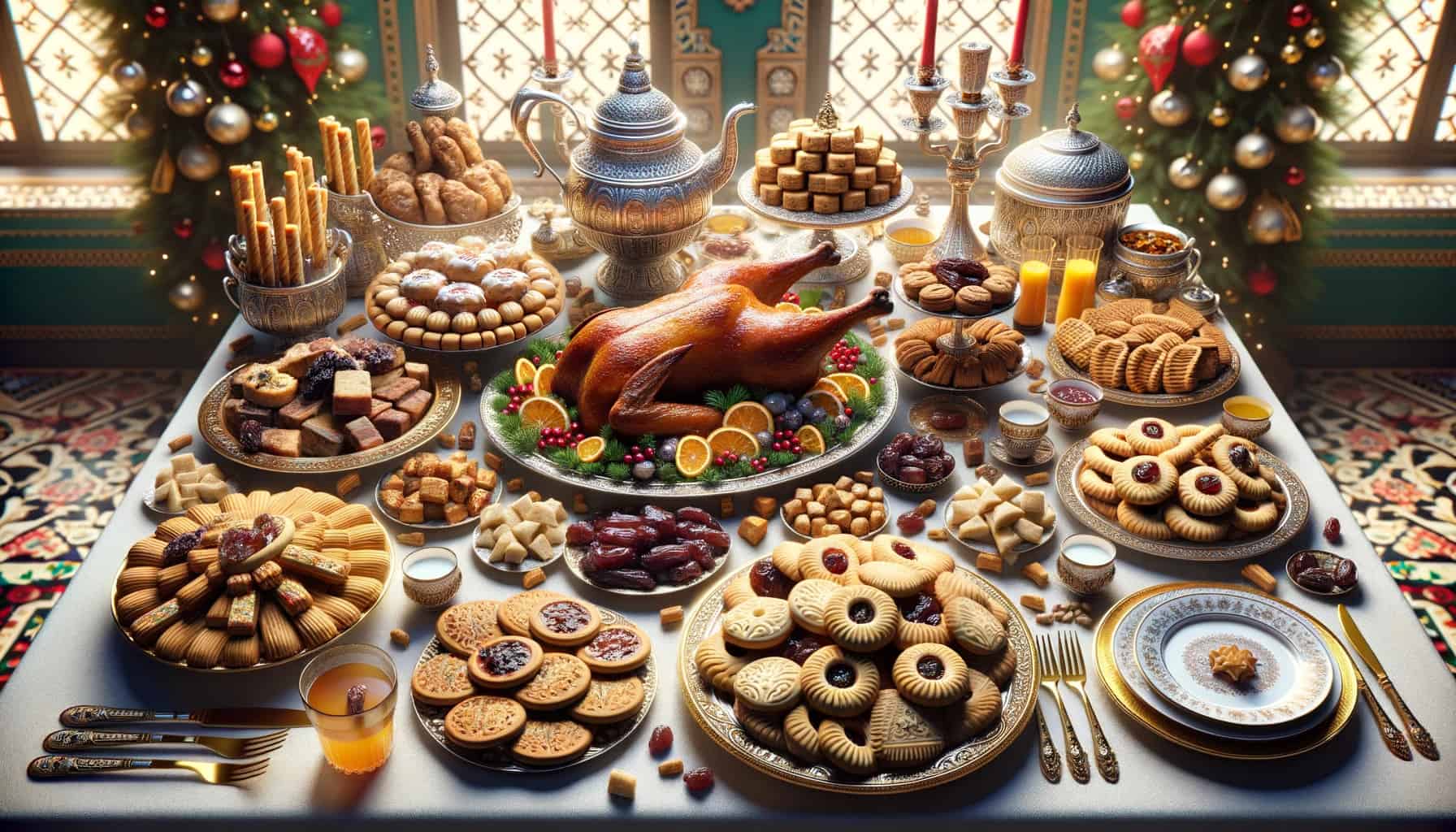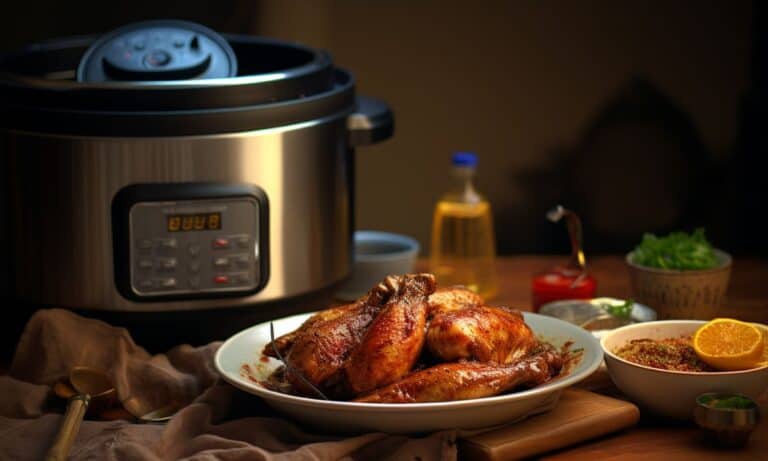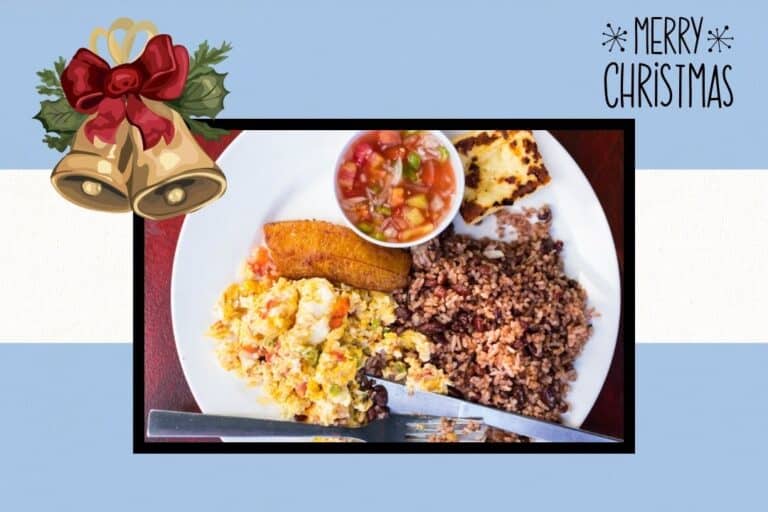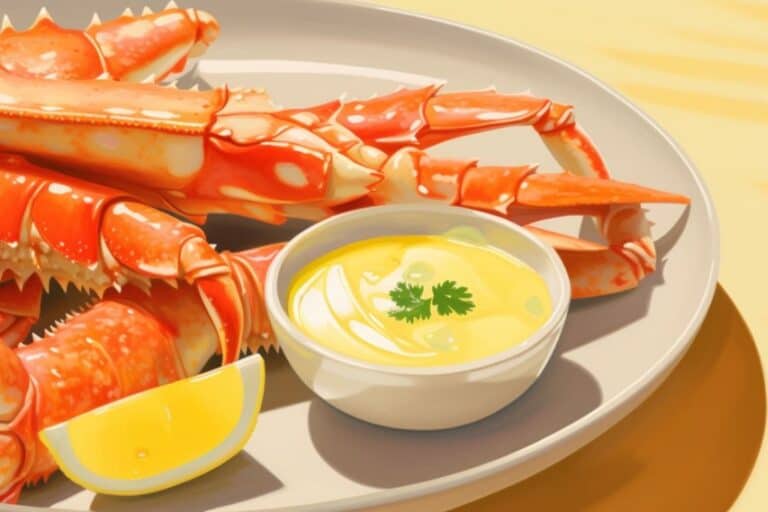Traditional Egypt Christmas Foods for January 7th
Delve into the rich and mouthwatering world of feasting on traditional Egyptian Christmas meals celebrated on Advent day, January 7th. In Egypt, Coptic Christians in the Orthodox Church follow the Julian calendar, which places their Christmas celebrations during Advent, a few weeks after the Gregorian calendar’s festivities.
In the heart of North Africa, Egypt stands as a testament to diverse cultures and ancient traditions. Among these traditions is the celebration of Christmas by Egyptian Christians, particularly the Coptic Orthodox Christians.
While many might conjure images of Christmas trees and Santa Claus, or as he’s fondly known in Egyptian Arabic, “Baba Noel,” Egyptian Christmas is unique in its own right.

Drawing from the Middle East’s rich culinary landscape and the influences of ancient Egyptians, the Christmas table in Egypt is a delightful blend of traditional Egyptian food and special holiday fare.
Interestingly, Christmas doesn’t fall on December 25th for most Egyptian Christians. According to the Coptic calendar, a relic from ancient times, Coptic Christmas Eve is celebrated on January 6th.
As this day approaches, you’ll find many eagerly buying new clothes for the special service at the Coptic Church. Saturday nights and Sunday services leading up to this date are particularly intense, filled with a special liturgy that captures the Christmas spirit.
As the Christmas service ends, families gather to break their fast. For the 43 days leading up to Christmas, known as the Coptic month, many Egyptian Christians observe a strict vegan diet, avoiding dairy products, animal products, and even certain oils like olive oil.

This is in remembrance of the Holy Family’s 40-day journey through Egypt. The eve of Christmas marks the end of this fast; thus, the food that follows is nothing short of celebratory.
Central to the Egyptian Christmas meal are dishes like “Hamam Mahshi” – pigeons stuffed with rice and ground beef and seasoned with various spices. White rice cooked with lamb meat, tomato paste, and red sauce is another popular Egyptian dish gracing the tables during this religious festival.

Side dishes may include “Baba Ghanoush,” – a smoky eggplant dip flavored with lemon juice, and Egyptian falafel made from fava beans, served warm in baladi bread – a whole wheat bread staple in urban and rural areas.
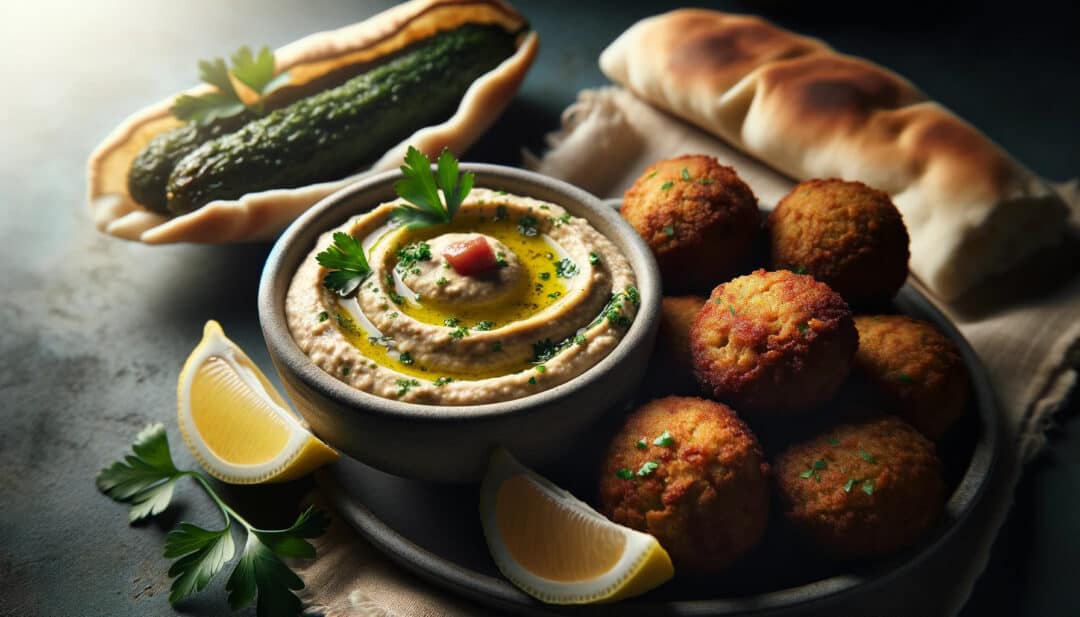
No festive meal in Egypt would be complete without special sweet biscuits, often made with a base of dairy products and large eggs, flavored with a hint of pine nuts.
For many, the main course might also be complemented by popular food items like French fries and the national dish of Egypt, “Koshari,” a flavorful mix of lentils, pasta, caramelized onions, and spicy red sauce. All this is accompanied by side dishes such as salads and warm pita bread.
The influence of Father Christmas, or “Baba Noel,” can also be seen in the little bit of modern Christmas spirit sprinkled throughout. Children might expect gifts, and there’s a sense of unity as even non-Christian Egyptians join in the heart of Christmas, recognizing its universal message of peace and goodwill.
While Egypt might not be the first country to come to mind when thinking of Christmas, its blend of orthodox churches, ancient traditions, and delicious foods make it a truly unique place to experience the festivities.
The History and Significance of Coptic Christmas in Egypt
Uncover ancient origins of Coptic Christmas.
Coptic Christmas in Egypt, known as Zaki Day, dates back to the early Christian era. It is a time when the community comes together to celebrate with a traditional dinner. The origins of this festive occasion are deeply rooted in ancient traditions.
The Coptic Orthodox Church established the celebration of Christ’s birth on January 7th to align with the Julian calendar, making it a significant day. This makes it one of the oldest Christian celebrations in the world, celebrated to this day.
Understand the importance of January 7th
January 7th holds immense significance for Egyptians as it marks the day when they celebrate Christmas. While many countries observe Christmas on December 25th according to the Gregorian calendar, Egypt follows the older Julian calendar for this occasion.
In Egypt, Christmas Day is celebrated according to the Julian calendar. This cherished tradition among Coptic Christians stems from historical reasons and is celebrated on a unique day.
Learn about preserving religious traditions.
Throughout history, Coptic Christians have remained steadfast in preserving their religious traditions day after day. Despite facing various challenges and periods of persecution, the Coptic community has managed to maintain its distinctive practices associated with Coptic Christmas Day.
These include attending midnight church masses adorned with beautiful decorations and participating in processions showcasing their rich cultural heritage.
Discover a symbol of national unity.
In modern-day Egypt, Coptic Christmas has evolved into more than just a religious celebration; it has also become a symbol of national unity. Muslims and Christians exchange greetings, share meals, and partake in festivities.
This harmonious coexistence is a testament to Egypt’s cultural diversity and is an example of other nations striving for interfaith harmony.
Coptic Christmas is integral in fostering social cohesion by bridging divides between different communities within Egyptian society. It serves as a reminder that despite differing beliefs, people can come together under shared values and celebrate each other’s traditions.
Coptic Christmas Traditions and Rituals
Coptic Christmas, celebrated on January 7th, is a vibrant and cherished time in Egypt. Let’s delve into the rich tapestry of customs observed during these festivities and explore the spiritual practices accompanying this joyous occasion.
Unique Traditions
Orthodox Christians in Egypt observe a period known as the Holy Nativity Fast leading up to Coptic Christmas. This fast lasts for 43 days, during which believers abstain from certain foods, pray, and reflect. It is a time of preparation and spiritual cleansing before celebrating Christ’s birth.
Midnight Mass and Processions

One of the most significant rituals during Coptic Christmas is attending Midnight Mass. People gather at churches across Egypt to participate in this solemn yet uplifting service. The atmosphere is filled with anticipation as prayers are offered, hymns are sung, and readings from the Bible recounting the nativity story are shared.
Following Midnight Mass, colorful processions take place through the streets. These processions feature clergy members carrying icons or relics while chanting hymns. The faithful join in, holding candles or small lanterns as they walk alongside, creating a mesmerizing sight that showcases their devotion.
Gift Exchanges and Shared Meals

Like many other cultures worldwide, families gather during Coptic Christmas to exchange gifts and share meals. Loved ones gather around tables laden with traditional dishes prepared with love and care.
Egyptian households often prepare festive delicacies such as fatta (a savory dish made with rice, bread, meat broth, garlic sauce), kahk (sweet cookies filled with dates or nuts), roasted lamb or chicken, mulukhiyah (a green leafy vegetable soup), stuffed grape leaves (warak enab), baklava (a sweet pastry filled with nuts), and basbousa (a semolina cake soaked in syrup).
These meals are a time for indulging in delicious food and for families to bond and create lasting memories. It is a time when loved ones come together to celebrate the birth of Jesus Christ and express their gratitude for the blessings in their lives.
Spirituality and Togetherness
Coptic Christmas is a beautiful blend of spirituality and togetherness. It is a time when people connect with their faith, honor their traditions, and strengthen the bonds within their families and communities.
The rituals performed during this festive season serve as reminders of the importance of love, compassion, and unity. They provide an opportunity for individuals to reflect on the teachings of Christ and renew their commitment to living a life rooted in faith.
As Coptic Christmas approaches each year, Egyptians eagerly anticipate the joyous celebrations that await them. The unique traditions, spiritual practices, midnight Masses, processions, gift exchanges, and shared meals make this occasion memorable.
Popular Dishes for a Coptic Christmas Feast: Fattah, Baked Turkey, and More
If you want to celebrate Coptic Christmas on January 7th in Egypt, prepare for a mouthwatering feast filled with traditional dishes that will tantalize your taste buds. From rich flavors to hearty ingredients, these culinary delights are integral to the festive celebrations. Explore some famous words that grace the tables during this joyous occasion.
Indulge in Fattah, a traditional dish with rice, meat, bread, and garlic-infused broth.
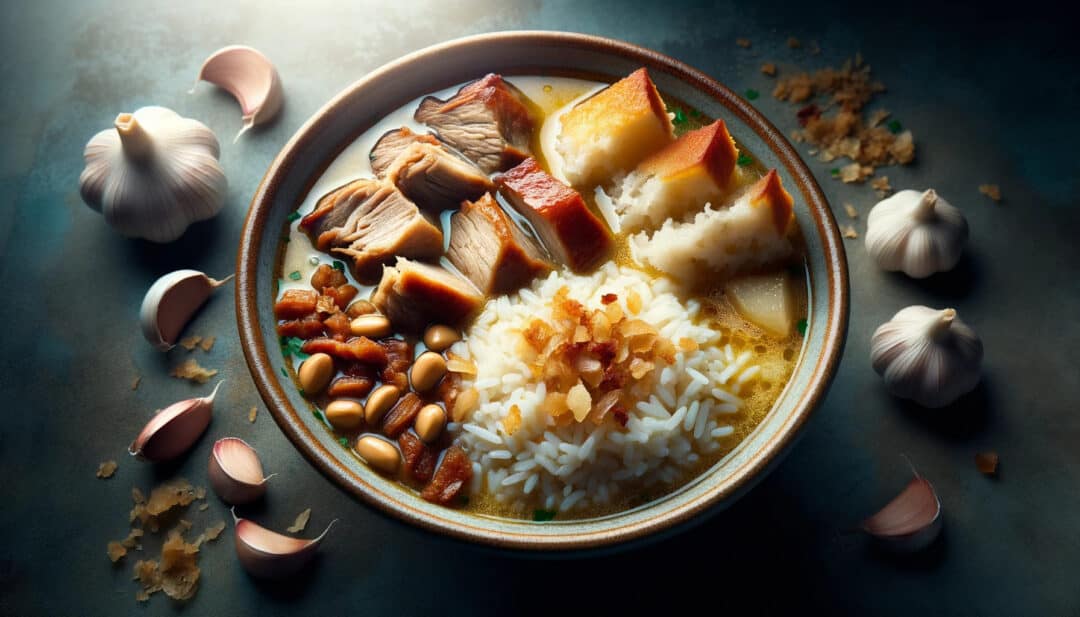
Fattah is a beloved dish that takes center stage during Coptic Christmas feasts. It is a flavorful combination of rice, tender pieces of meat (usually lamb or beef), crispy bread cubes, and a fragrant garlic-infused broth poured over the top.
This hearty and comforting dish represents the essence of Egyptian cuisine and is often served as a symbol of celebration. The layers of flavors and textures create a truly satisfying experience for your palate.
Savor the succulent flavors of baked turkey seasoned with aromatic spices and herbs.
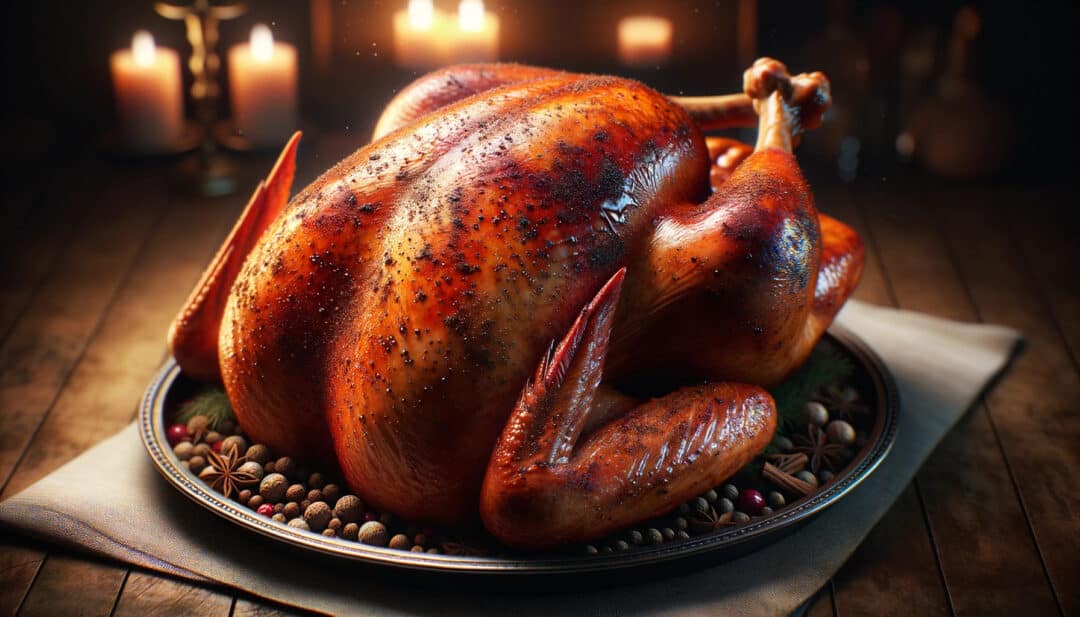
While turkey may not be traditionally associated with Egyptian cuisine, it has become increasingly popular as a festive centerpiece during Coptic Christmas celebrations. Egyptians have embraced this Western influence by infusing their unique flavors into the preparation.
The turkey is marinated in aromatic spices such as cumin, coriander, cinnamon, and nutmeg before being roasted to perfection. The result is a succulent and flavorful bird that will leave you craving more.
Delight your palate with Koshari, a beloved Egyptian street food often enjoyed on this day.
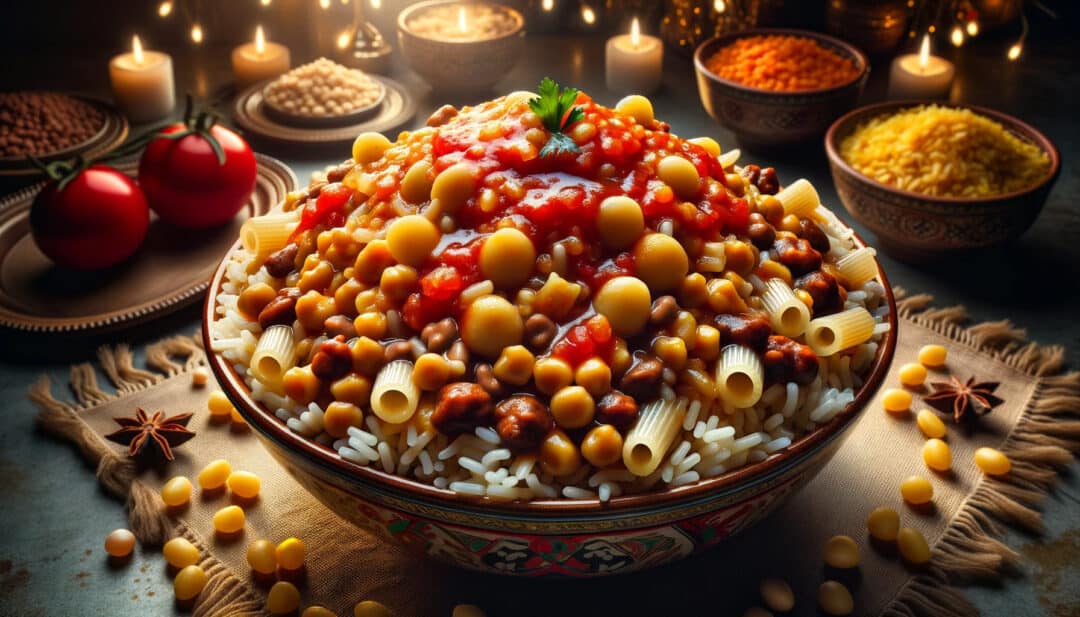
Koshari is an iconic Egyptian street food that has gained popularity as an essential part of the Coptic Christmas feast. This vegetarian dish consists of layers of rice, lentils, macaroni noodles, chickpeas, caramelized onions, and a tangy tomato sauce.
Combining textures and flavors creates a harmonious, satisfying, and delicious blend. Koshari is a staple comfort food in Egypt during the festive season and throughout the year.
Experience the warmth of Molokhia soup served alongside tender lamb or chicken at festive tables.

Molokhia soup is special in Egyptian cuisine and is often featured on Coptic Christmas tables. This hearty green soup is made from finely chopped molokhia leaves (also known as jute mallow) cooked with garlic, coriander, and other aromatic herbs.
It is typically served with tender pieces of lamb or chicken, adding an extra layer of richness to the dish. Molokhia soup’s warm and comforting flavors make it perfect for celebrating this joyous occasion.
As you gather with loved ones to celebrate Coptic Christmas on January 7th, these traditional dishes will add extra joy to your festivities. Whether you indulge in Fattah’s layers of flavor, savor the succulent baked turkey, delight in Koshari’s street food charm, or experience the warmth of Molokhia soup, your taste buds are in for a treat.
Embrace the rich culinary heritage of Egypt and enjoy these beloved dishes that bring people together during this particular time.
Kahk Cookies: Sweet Treats of Egyptian Christmas

Sink your teeth into Kahk cookies, the sweet biscuits staple during Egyptian Christmas celebrations. These delectable treats are a beloved part of the festive season and hold a special place in the hearts of Egyptians. Explore why Kahk is so popular and discover the traditions surrounding these mouthwatering cookies.
Butter, Dates or Nuts, and Powdered Sugar
Kahk cookies are known for their buttery texture and delightful flavors. They are typically filled with either dates or nuts, adding a rich sweetness to each bite. The outer layer is often dusted with powdered sugar, giving them an irresistible touch of sweetness.
Whether you prefer the gooey goodness of date-filled Kahk or the crunchy satisfaction of nut-filled ones, they are undoubtedly delicious.
Baking and Sharing Love
One of the most cherished traditions during Egyptian Christmas is gathering together as families to bake Kahk cookies. It’s when generations combine to mix ingredients, shape dough into small rounds, and create these delightful treats. The process itself becomes an occasion for bonding and making memories.
Once baked to golden perfection, these homemade Kahk cookies are shared with loved ones and neighbors as a gesture of love and goodwill. It’s common for families to exchange boxes filled with these sweet delights as gifts during this joyous season.
The act of sharing Kahk symbolizes unity, generosity, and spreading happiness among communities.
A Sense of Belonging
The popularity of Kahk cookies extends beyond their delicious taste. They evoke a strong sense of belonging among Egyptians during Christmas festivities. These traditional treats bring back memories from childhood Christmases spent with family and friends.
Kahk holds even more significance for many Egyptians living abroad as it connects them to their cultural roots. It serves as a reminder of home and helps them maintain a sense of identity and tradition, even in distant lands. The aroma of freshly baked Kahk can transport them back to the warmth and joy of Egyptian Christmas celebrations.
A Symbol of Celebration
Kahk cookies have become synonymous with Egyptian Christmas celebrations. They are a sweet treat and a symbol of joy, togetherness, and celebration. As families gather around tables adorned with platters of Kahk, laughter fills the air, and hearts are filled with happiness.
These delectable cookies have stood the test of time, remaining integral to Egyptian culture for centuries. They continue to bring people together and create lasting memories during this festive season.
So, if you can try Kahk cookies during Egyptian Christmas festivities, don’t miss out on this delightful experience. Indulge in their buttery goodness, savor the flavors of dates or nuts, and let powdered sugar melt on your tongue. It’s a taste that will leave you craving more!
Festive Decorations and Customs during Coptic Christmas Celebrations
During Coptic Christmas celebrations in Egypt, the vibrant decorations adorning homes, streets, and churches create a festive atmosphere. These decorations are essential in setting the mood for this joyous occasion. Let’s delve into the customs and symbolic meaning behind these traditional ornaments.
Vibrant Decorations Adorn Homes, Streets, and Churches
Egyptians go all out. Colorful lights twinkle on trees lining the streets, while homes are adorned with wreaths, garlands, and nativity scenes. Churches also transform with elaborate displays of lights and ornaments.
Symbolic Meaning Behind Traditional Ornaments
Each ornament carries its symbolic meaning during Coptic Christmas. Stars represent the Star of Bethlehem that guided the Wise Men to Jesus’ birthplace. Crosses symbolize Jesus’ sacrifice on the cross for humanity’s salvation. Angels signify divine protection and blessings.
Lighting of Candles: Illuminating Darkness with Hope
The lighting of candles holds excellent significance during Coptic Christmas celebrations. It represents illuminating darkness with hope and spreading light in a world of challenges. As families gather for prayers at home or in churches, candles symbolize Christ as the Light of the World.
Creating a Festive Atmosphere through Music, Dance, and Joyful Gatherings
Music plays a vital role in Egyptian Christmas celebrations. Traditional hymns are sung in churches and homes as people come together to rejoice in the birth of Christ. The joyful melodies fill the air with happiness and unite communities in celebration.
Dance is another integral part of Coptic Christmas festivities. Folk dances such as “Zaffa” are performed during processions or weddings around this time of year. These lively dances add an extra element of merriment to the holiday season.
Joyful gatherings with family and friends are a hallmark of Coptic Christmas. Egyptians come together to share meals, exchange gifts, and enjoy each other’s company. It is a time for strengthening bonds and creating cherished memories.
Beverages to Enjoy during Egyptian Christmas Festivities
During the Coptic Christmas celebrations in Egypt, various traditional beverages are enjoyed by locals and visitors alike. These drinks quench your thirst and add a unique flavor to the festive atmosphere. Let’s explore some popular drinks you can indulge in during this joyous occasion.
Amleh: A Refreshing Spiced Drink
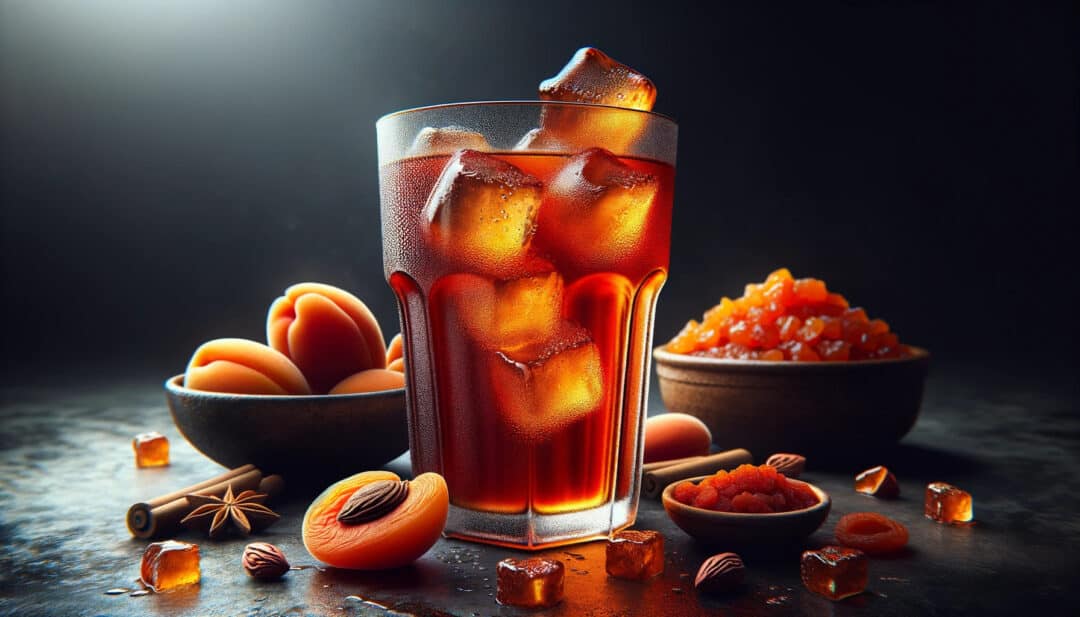
One of the must-try beverages during Egyptian Christmas festivities is Amleh. This refreshing drink is made from dried apricot paste, which gives it a tangy and fruity flavor. The paste is mixed with water, sugar, and spices like cinnamon and nutmeg to create a delightful concoction that will leave you wanting more.
Amleh is often served chilled, perfect for hot summer days or as a refreshing treat after indulging in delicious holiday meals.
Sahlab: Creamy Hot Beverage with a Twist
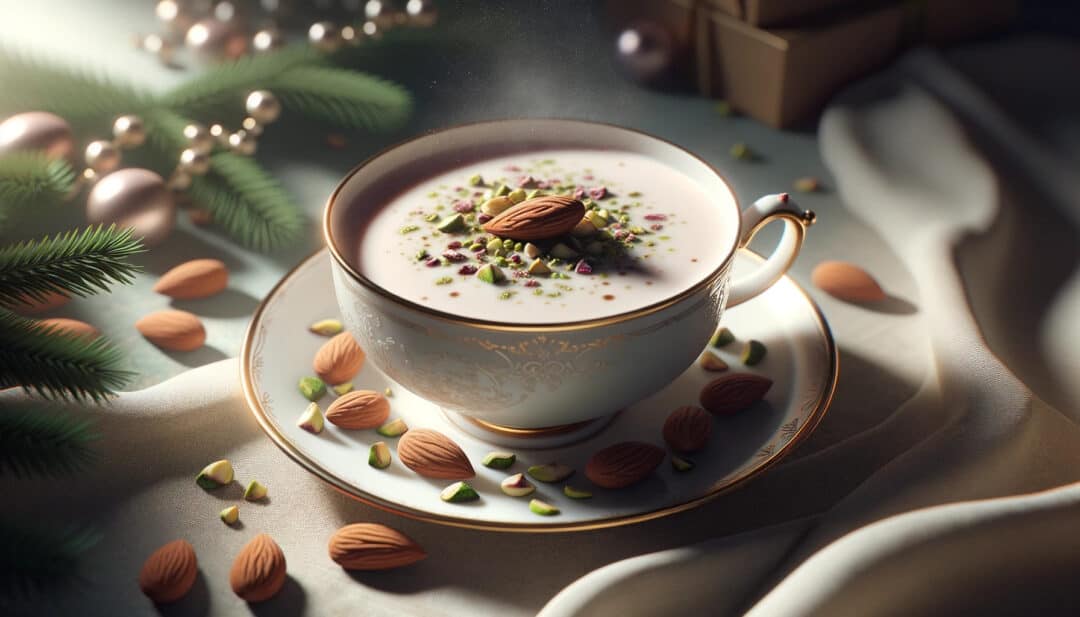
If you prefer something warm and comforting, Sahlab is your beverage. This creamy hot drink is flavored with rosewater and topped with nuts such as almonds or pistachios. It has a smooth texture and a subtle floral aroma that adds an extra touch of elegance to your Christmas celebrations.
Whether you sip on it while sitting by the fireplace or enjoy it as part of a cozy gathering with loved ones, Sahlab will surely bring warmth and joy to your heart.
Hibiscus Tea: Aromatic Delight

Hibiscus tea is very significant in Egyptian culture, especially during Christmas time. Made from dried hibiscus flowers steeped in hot water, this vibrant red tea has a tangy taste with floral undertones.
It is often sweetened with sugar or honey to balance its natural tartness. Hibiscus tea refreshes your palate and provides numerous health benefits due to its high antioxidant content. So raise your cup and savor the aromatic delight of this traditional Egyptian beverage.
Traditional Fruit Punches: Bursting with Flavors

Traditional fruit punches are a hit during Egyptian Christmas celebrations. These punches combine fresh fruits with various flavors like pomegranate or tamarind. The result is a burst of fruity goodness that tantalizes your taste buds and adds a vibrant touch to the festivities.
Whether you prefer a tangy and sweet pomegranate punch or a refreshing tamarind-infused concoction, these fruit punches will surely be crowd-pleasers at any Christmas gathering.
Embracing the Richness of Traditional Egyptian Christmas Foods
We learned about the significance of Coptic Christmas in Egypt and how it is celebrated with unique customs and rituals. From mouthwatering dishes like Fattah and Baked Turkey to the delightful Kahk cookies, we have delved into the flavors that bring joy to this festive occasion.
As you embrace the richness of traditional Egyptian Christmas foods on January 7th, we encourage you to immerse yourself in the cultural heritage and culinary delights that make this celebration unique.
Whether you are planning a feast with your family or want to try some authentic recipes, let these traditions transport you to Egypt during this festive season.
FAQs – Egypt Christmas foods
What is Fattah?
👉 Fattah is a traditional Egyptian dish with layers of rice, bread, meat (usually lamb or beef), and garlic-infused broth. It is often served during special occasions such as weddings or religious celebrations like Coptic Christmas. The combination of flavors and textures creates a hearty and satisfying meal.
How do I make Kahk cookies?
👉 Kahk cookies are sweet treats enjoyed during Egyptian Christmas celebrations. The dough is typically made with butter, flour, powdered sugar, yeast, and milk, sometimes with spices like cardamom or cinnamon.
After shaping them into small rounds or crescents, they are baked until golden brown. Once cooled, they can be filled with dates or nuts for added flavor.
Are there any vegetarian options for Coptic Christmas?
👉 Yes! While many traditional dishes for Coptic Christmas include meat as a central ingredient, vegetarian options are also available. Dishes like Kushari (a mix of lentils, pasta, and rice topped with tomato sauce), Ful Medames (mashed fava beans), and various vegetable-based stews are popular for those following a vegetarian diet.
What other customs are observed during Coptic Christmas?
👉 In addition to the delicious food, Coptic Christmas is marked by various customs and traditions. These may include attending church services, exchanging gifts with loved ones, singing carols, and lighting candles.
Many families also decorate their homes with festive ornaments and symbols of the holiday season.
👉 Can I find traditional Egyptian ingredients outside of Egypt?
While some ingredients used in traditional Egyptian dishes may be more readily available in Egypt, many can be found in specialty stores or online. Look for Middle Eastern grocery stores or international markets with a wide range of spices, grains, and other essential ingredients used in Egyptian cuisine.

Born and raised in a family of foodies, Georgia’s passion for cuisine was nurtured from a young age as she learned the intricacies of flavor and texture from her grandmother’s kitchen. As an adult, this early fascination blossomed into a full-fledged love affair with the culinary world.

